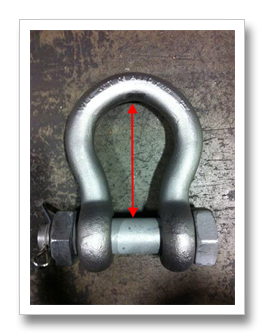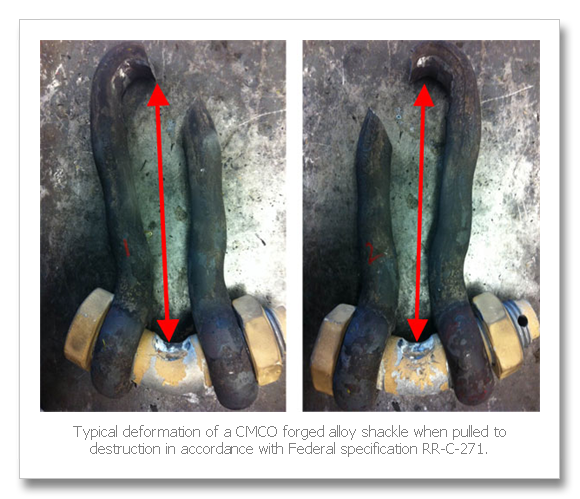
Forging vs. Casting: Which is Better for Shackles?
Rigging | Safety and Training | By Troy Raines | Jan 15, 2020
 This question, “Forging vs. Casting: Which is better?” is one that I have been asked many times when it comes to rigging products. To properly explore the answer, let’s first consider the process of each.
This question, “Forging vs. Casting: Which is better?” is one that I have been asked many times when it comes to rigging products. To properly explore the answer, let’s first consider the process of each.
Forging and casting are two very different manufacturing methods. When something is cast, the material is heated above its melting temperature and poured into a mold where it solidifies. When something is forged it is physically forced into shape while remaining in a solid state – although it is frequently heated.
As an engineer, I have always known that forgings normally have less surface porosity, finer grain structure, higher tensile strength, better fatigue life/strength, and greater ductility than castings. In other words, forgings are generally better for shackles. The basics of why are pretty simple. When you melt metal to cast it, the grain size is free to expand. When it cools back to a solid, the grain structure is courser and more random, decreasing its strength.
But just how much better is a forging than a casting?
I did some research on the internet and found an excellent research paper* written by members of the Industrial & Manufacturing Engineering Department at the University of Toledo, shared by the Forging Industry Association. This paper compares a single type of product made both ways. Read it here.
How’s this for hard numbers? No pun intended.
- Forged parts had a 26% higher tensile strength than the cast parts. This means you can have stronger shackles at a lower part weight.
- Forged parts have a 37% higher fatigue strength resulting in a factor of six longer fatigue life. This means that a forged shackle is going to last longer.
- Cast iron only has 66% of the yield strength of forged steel. Yield strength is an indicator of what load a shackle will hold before starting to deform.
- The forged parts had a 58% reduction in area when pulled to failure. The cast parts only had a 6% reduction in area. That means there would be much greater deformation before failure in a forged part.
To further illustrate the point, see the below photos from our in-house testing:

These forged CM shackles show significant deformities before failure. If you were hanging a load overhead from a shackle, wouldn’t you want that shackle to warn you before it failed? Or do you like surprises?
All CM shackles are forged; and they’re forged right here in America at our Chattanooga, Tennessee Operations. Safer and made in America? I think that I will stick to forgings. What will you do?
* The title of the research paper is “Fatigue Performance Comparison and Life Predictions of Forged Steel & Ductile Cast Iron Crankshafts” written by Jonathan Williams, Farzin Montazersadgh, and Ali Fatemi, Graduate Assistants and Professor, respectively, Mechanical, Industrial & Manufacturing Engineering Department, The University Of Toledo – Toledo, Ohio.
Troy Raines
Troy Raines is a Global Chain and Rigging, Product Engineering Manager at Columbus McKinnon Corporation. He has 15 years of experience with CM on multiple ASME, WSTDA, ASTM, and ISO industry standards and technical committees. Troy believes that we are stronger/smarter as a team and enjoys strategic thinking that finds the best solution for all parties.

Related Articles
Nine Important Rules to Follow When Using Shackles
Best Practices for Using Shackles Safely
Shackles are used every day in a variety of rigging and load securement applications.
Shackle Inspection Checklist: Six Items to Inspect Before Use
Know What to Look For and When to Remove a Shackle from Service
Per ASME B30.26, visual shackle inspection should occur before every use. We share six conditions when a shackle should be discarded and replaced.



 North America - EN
North America - EN






